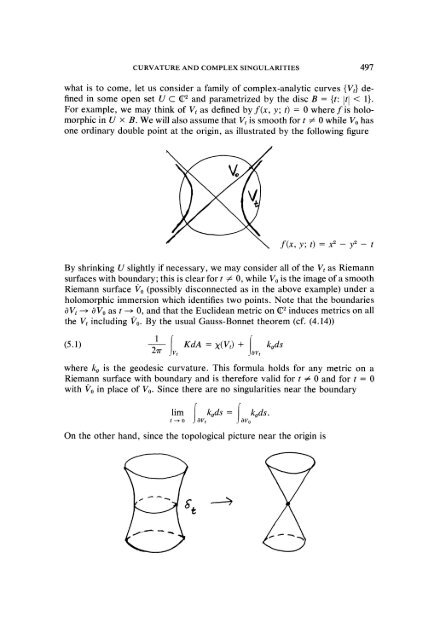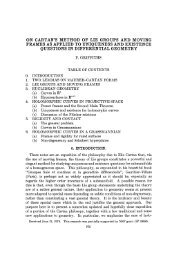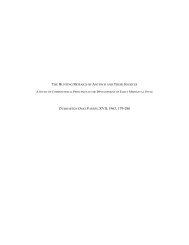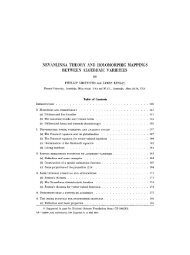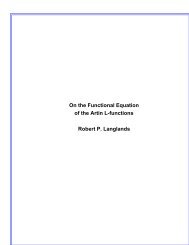View PDF - Project Euclid
View PDF - Project Euclid
View PDF - Project Euclid
Create successful ePaper yourself
Turn your PDF publications into a flip-book with our unique Google optimized e-Paper software.
CURVATURE AND COMPLEX SINGULARITIES 497<br />
what is to come, let us consider a family of complex-analytic curves {Vt} defined<br />
in some open set U C 2 and parametrized by the disc B {t" It < 1}.<br />
For example, we may think of Vt as defined by f(x, y; t) 0 where f is holomorphic<br />
in U B. We will also assume that V is smooth for t 0 while V0 has<br />
one ordinary double point at the origin, as illustrated by the following figure<br />
f(x, y; t) x yz<br />
By shrinking U slightly if necessary, we may consider all of the Vt as Riemann<br />
surfaces with boundary; this is clear for 0, while V0 is the image of a smooth<br />
Riemann surface 0 (possibly disconnected as in the above example) under a<br />
holomorphic immersion which identifies two points. Note that the boundaries<br />
OVt 0 Vo as 0, and that the <strong>Euclid</strong>ean metric on induces metrics on all<br />
the Vt including 9o. By the usual Gauss-Bonnet theorem (cf. (4.14))<br />
(5.1)<br />
Iv KdA=x(Vt)+ Io 2r kods<br />
v<br />
where ko is the geodesic curvature. This formula holds for any metric on a<br />
Riemann surface with boundary and is therefore valid for 0 and for 0<br />
with 0 in place of V0. Since there are no singularities near the boundary<br />
lim f kods= f kods.<br />
OVt OVo<br />
On the other hand, since the topological picture near the origin is


